XCollar Features
The U.S. Department of Transportation, National Highway Traffic Safety Administration's National Standard Curriculum for EMT-Basic training describes protocols for the emergency medical care of a patient who may have sustained cervical spinal injury. These protocols provide the current standard of care for stabilization of the cervical spine at the scene of an incident. These best practices reflect the shortfalls of other cervical collars available for emergency medical personnel.The XCollar addresses and mitigates these deficiencies and establishes a new standard of care:
- Greater degree of immobilization
- Immobilizes in a position of comfort
- Fits a broader range of patient sizes and types
- Custom fit during application
XCollar Provides a Greater Degree of Immobilization
DOT EMT-Basic Training Module 5 Lesson 5-4 Section V.A.3.a, page 5-431
"Cervical immobilization devices alone do not provide adequate in-line immobilization."The XCollar Solution: XCollar's innovative features provide improved immobilization by creating an integrated system of stabilization between the thoracic cavity and the head.

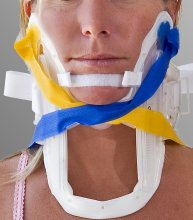
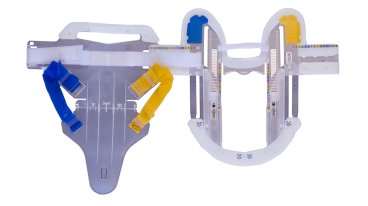
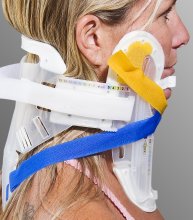

XCollar Immobilizes in a Position of Comfort
DOT EMT Basic Training Module 5 Lesson 5-4 Section III.E.2.a, page 5-426
"Place the head in a neutral in-line position unless the patient complains of pain or the head is not easily moved into position."Problem: Other cervical collars are designed only to be used in a neutral position.
The XCollar Solution: The XCollar's unique side-to-side adjustable design allows rescuers to stabilize patients in the position found, or the patient's position of comfort.

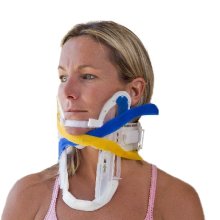

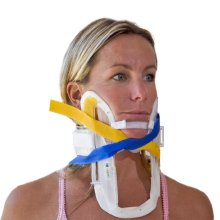

XCollar Fits a Broader Range of Patient Sizes and Types
DOT EMT Basic Training Module 5 Lesson 5-4 Section V.A.2.b, page 5-430
"Various types of rigid cervical immobilization devices exist, therefore, sizing is based on the specific design of the device." Problem: Other collars do not offer features to accommodate a wide range of patient sizes and types. For example, when other cervical collars are placed on a large patient, the device will push the patient's head off to one side and away from the neutral position.
Problem: Other collars do not offer features to accommodate a wide range of patient sizes and types. For example, when other cervical collars are placed on a large patient, the device will push the patient's head off to one side and away from the neutral position.Problem: When applying other collars to patients, the rescuer must approximate the setting for fitment of the collar prior to application.
The XCollar Solution: The XCollar will fit a broader range of patient sizes and types while maintaining the neutral position in symmetry or in a position of comfort, while providing improved cervical stabilization. It has 28 vertical positions with a 3.25 inch (8.3 cm) range of adjustment and custom bilateral (side-to-side) adjustability with a 5.5 inch (14 cm) of circumferential range. Fitment during application has eliminated the need for the rescuer's guesswork.





XCollar is Custom Fit During Application
DOT EMT Basic Training Module 5 Lesson 5-4 Section V.A.2.a, page 5-430
"An improperly sized immobilization device has a potential for further injury."Problem: A collar that does not fit the patient allows excess movement or places the patient in an improper position.
The XCollar Solution: The XCollar's ergonomic design conforms to the patient for custom and proper fitting during application.


